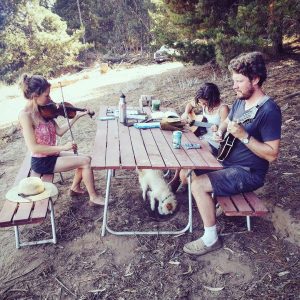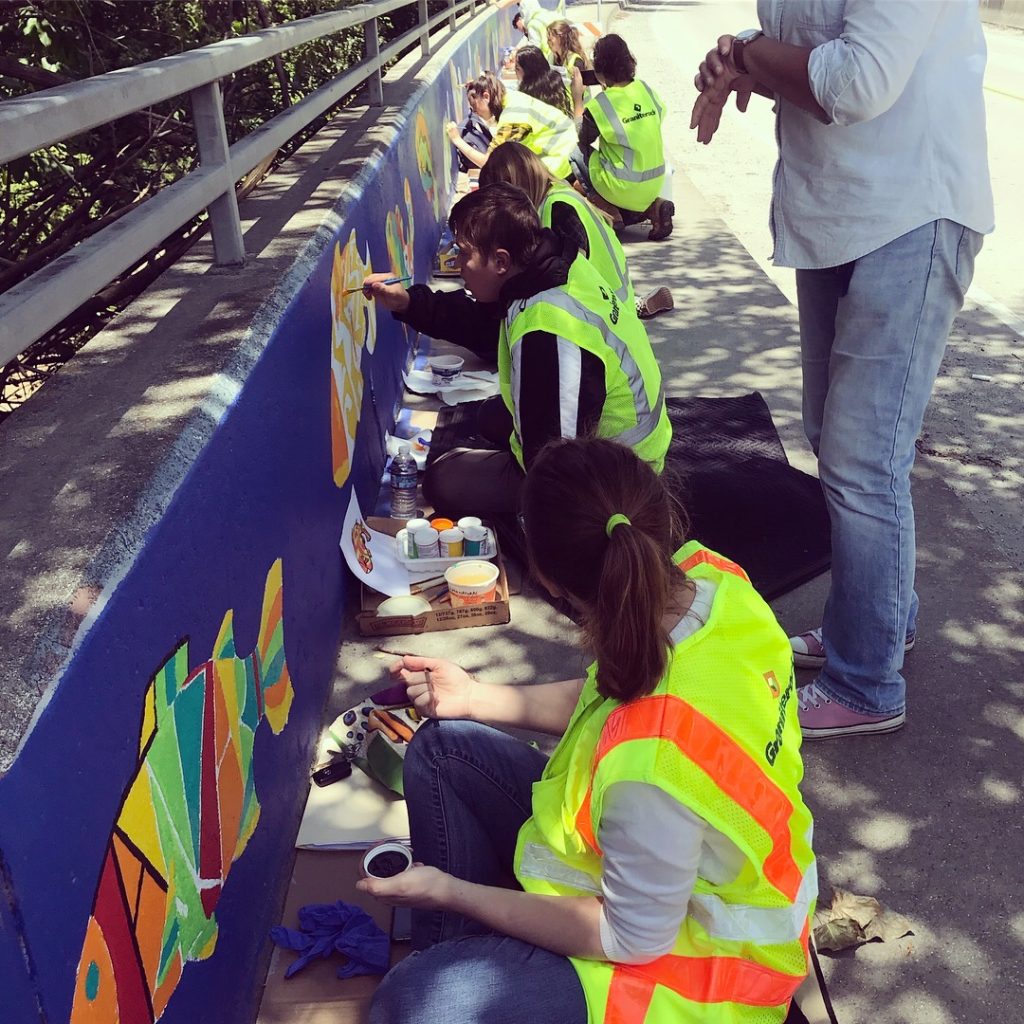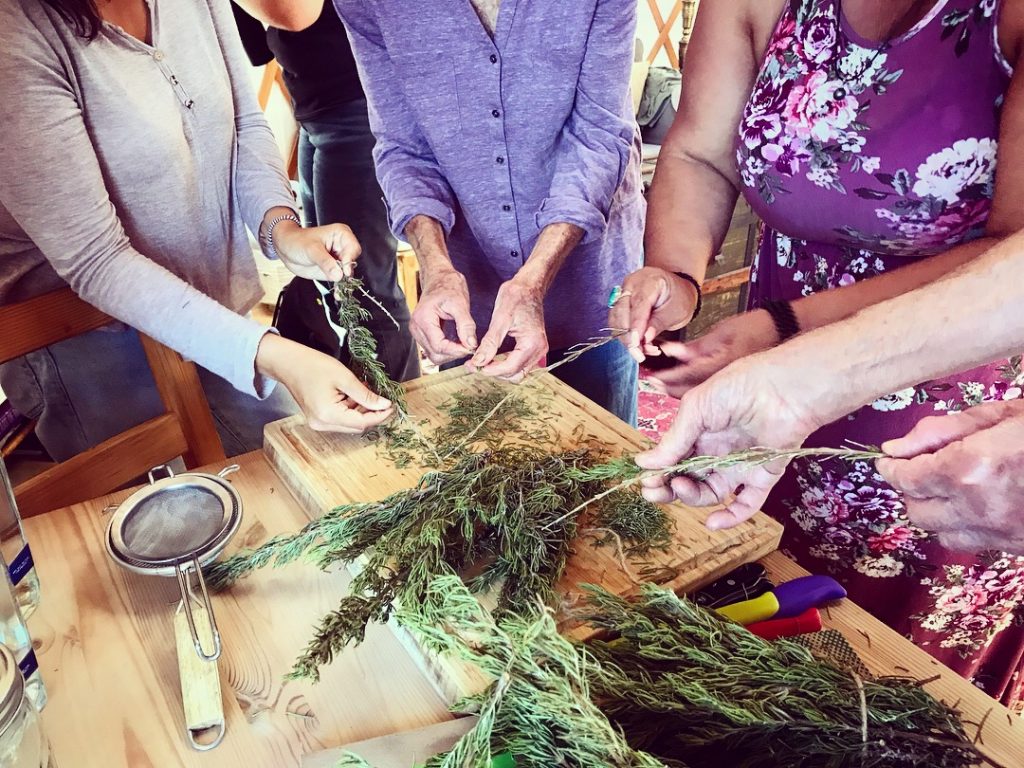Welcome to Terra Cultura, a land of rainbows, where domesticated things run wild and the once stray gray cats throw themselves against you with aggressive affection, where we wake at 3am many nights soaked in the sweat and dread of our generation, but eat the food we grow, and laugh, and play music around the fire together like we believe we could carve out a niche of the world we’d like to see. It’s more than a vision, it’s something we can smell and taste and feel but not quite hold, and many days it feels far away. I’m not so young or naïve and I know that if we have any chance of realizing a reality that is safe, secure, abundant, and affectionate for all creatures and their home it will be through indelible hope, radical imagination, good hard work, and processes of collaboration.
Before I came to co-run the educational eco-arts farm Terra Cultura I cultivated a career in theater. Within this most collaborative of art forms, my role is to facilitate the creative process through methods that are as collaborative as possible. When all voices are deeply heard and valued, and all ideas are explored with commitment, participants invest more emotional honesty and bravery to the production, bringing the work more life, resonance, truth, and impact. My Terra Cultura co-founders come from backgrounds in music and community organizing, structures that also thrive through collaboration.

Collaboration can have its pitfalls, though usually an ineffectual or overly bureaucratic collaborative process is due to unchecked egos, lack of a skilled facilitator, or a failure to inspect processes and values that aren’t serving the project. Building trust and authentic reciprocal relationships can take time and maintained effort. Many of the experiences that cause suspicion of collaboration actually stem from competition or exploitation which have no place in healthy collaboration. For example, I argue that in a healthy collaboration groups do not compete for scarce resources, hoard credit, seek personal gain, or fail to amplify, honor and value diverse backgrounds and ideas. If any of these elements of competition or exploitation are present in our so-called collaborations it is time to rethink our processes.
Collaboration is by nature an ever-shifting process so it can be hard to nail down. The beauty of collaboration is its mutability to adapt to every new relationship. Broadly, collaboration is a method of working towards a common goal whereby the sum of the parts is greater than any entity on its own–a format for mutually beneficial partnership by which burden is eased through shared responsibility, where all participants are uplifted and empowered to reach their peak potential, and each party is valued and recognized for their contributions. Collaboration, as we see at Terra Cultura, is the antithesis of competition, so hoarding credit or seeking personal gain runs counter to our aims.
At Terra Cultura we are advocates of intersectionality and solidarity. We believe that due to the systemic nature of injustice, all our struggles are tied up with one another, and by working to dismantle one thread of oppression, we are working to gradually untie the larger knot. Only by working together can we gather enough force, momentum, and power on the margins to activate real change. We will never agree on everything, in fcat diverse ideas are a strength, and we struggle through our differences to stay focused on the larger goal.
An example: A few years ago when we were relatively new to town a community leader approached us and requested we take on a public art mural project on a bridge covered in graffiti. At the time we were busy getting to know the town, attending every meeting we learned about just to listen and learn what the community wanted and where there were gaps to be filled. We volunteered for everything to get to know everybody and were looking for projects where we could be of use. A beloved local artisans group (Aromas Hills Artisans (AHA), shout out, they’re amazing) who had painted many delightful murals around town had been eyeing the bridge as a possible canvas for a while, but had been putting off taking on such a large scale project. The bridge is over 500 feet long and sits at the corner where 3 counties meet, so the permitting paperwork alone was overwhelming.

It took several community organizations coming together to make it happen. Through community meetings we delegated roles: The theme of the art was decided collaboratively, Terra Cultura suggested an ecological theme and AHA artists created the mural design inspired by a successful environmental restoration project at the site; AHA rallied their members as volunteers, surveyed the bridge to determine the amount and type of paint required, made a detailed timeline for the project, and organized an unveiling event; Terra Cultura took on the permits, wrote grants to fund supplies and artist fees, presented at various community meetings to gauge and foster support around the project, made the budget, bought supplies, and met with the local high school art teacher to involve the art students. Many members of both organizations showed up for months of weekends for every paint day, our cars loaded up with supplies, and all helped to recruit volunteers. Influential community groups like the Eagles and San Benito Arts Council helped out, and hundreds of community members participated in one form or another.
In the end, it was only by working together that we were able to accomplish a task that any one organization alone found daunting. It’s a case study of an opportunity to abandon antiquated models of scarcity mindsets and competition in favor of celebrating what a community can accomplish when we unite, work together, and pool resources to empower our community and maximize our impact. It is a radical act to collaborate in this way, a stance in defiance of supremacist culture that thrives on competition, exploitation, and pecking orders and gains power by dividing and conquering any who might question the status quo, or unify to change it.
Efforts are maximized when groups form coalitions and build bridges through collaborative projects. In formulating these alliances, process is important. The core Terra Cultura team worked for a time with a skilled mediator with experience living in community and she taught us the concept of process over program. For us this means that we hold space to address our holistic needs and allow ourselves to show up to the work as whole people. Through ongoing work to increase self-awareness and practice clear, direct communication we prioritize the emotional wellbeing of our cohort as we tackle our tasks. We facilitate better programming when we can bring all of our heart, mind, talents, and energy to the work without censure or compartmentalization. We honor our collaborators when we welcome them as whole multifaceted humans, messy feelings and all, rather than as machines.
Just as good collaboration is not competitive, it is also not exploitive. When exploring a potential collaborative relationship, rather than approaching a colleague with a mindset of what skill they can contribute, we instead welcome relationships that are organic, expansive, reciprocal, and holistic. The question is never what can this person do for me or for my group, but how can our partnership open pathways to transcend mutual boundaries and limitations, and how can there be a constant exchange of support and ideas to buoy all parties and bolster the work. The systems of working together are constantly reexamined and shifted to avoid stagnation.
With resilience at the crux of the Terra Cultura mission, the ability to adapt to constant change is crucial. This means we are always inspecting our processes and reexamining our vision to be sure we are honoring our mission, values, and community. When something isn’t working, we work through the issues and make changes to improve our systems. Since much of our work is with the next generation, we especially value the perspective of young people and believe it is essential to encourage their participation and leadership, and to fully integrate their voices, ideas, and full range of talents. They are the ones who inherit the future we are fighting for. In order to empower new leaders to keep the work vibrant and vital, an open source culture of information transparency is a crucial tool.

At Terra Cultura we are working towards a level of information access where everyone could potentially do any necessary task if needed. Division of labor can often serve a project, but skills and information are shared generously and we seek to keep roles as fluid and nonhierarchical as possible. Decisions are made by consensus and we rotate roles and responsibilities. We are working towards documenting all of our systems, from meeting facilitation methods to infrastructure repair information, in an open source document for all to access. New people are always coming through so by offering them the tools for successful participation we help to integrate them into our processes and empower their ownership in the project. We believe that these methods strengthen and grow our community and allow our community to be as resilient and relevant as possible.
As I write this Terra Cultura is buzzing with peaceful, purposeful activities. My colleagues are trimming tomatoes, planting pollinators, squeezing lemons, cooking lunch for one another to eat together around long tables in the outdoor kitchen, attending courses, assembling solar panel systems, teaching classes, filling up a trough turned hot tub for a starlit soak later… The day is hot and everyone is working at their own pace, playing music and chatting. Some days are harder than others, and we fall victim to stress, anxiety, overwork, overwhelm, and burnout. And, in many important ways we, and the land we are in partnership with, are thriving. In unlearning old ways of being and relearning to exist more holistically and reciprocally with nature and community the path is not linear. We are always learning and shifting our ideas, but right now, these are some of the relationships, values, and processes that we believe are needed to carry our communities and projects forward through changing times into a better future. We welcome you as collaborators in that process.


0 Comments